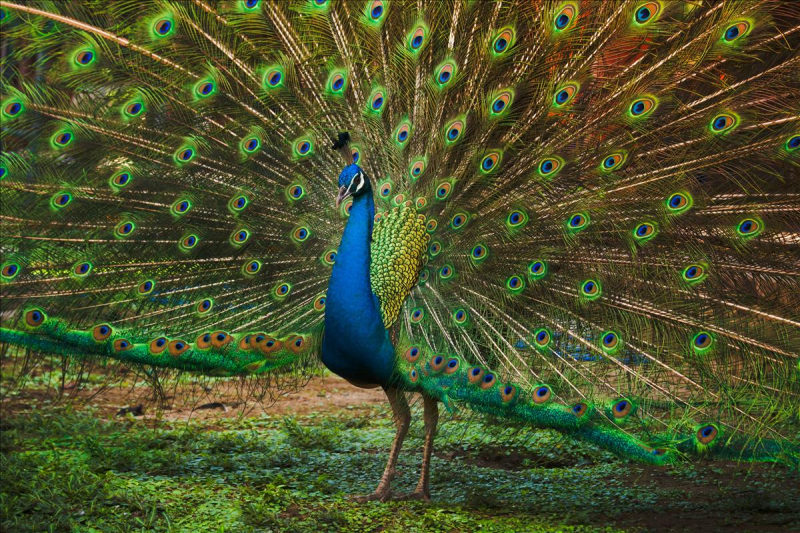Indian peafowl
Even though peafowl of either sex are frequently referred to as "peacocks" in casual language, male peafowl is known as peacocks and female peafowl as peahens. An obvious kind of sexual dimorphism is present in Indian peafowl. The peacock is well recognized for its long train of extended upper-tail covert feathers that contain colorful eyespots. It has a brightly colored, primarily blue fan-like crest of wire-like feathers with spatula tips. During courtship, these stiff feathers are lifted into a fan and quivered. Peacocks can still fly in spite of the size and length of their covert feathers. Peahens lack the train and have a dark brown coat, a white face, and an iridescent green lower neck.
The Indian peafowl spends much of its time foraging for berries and grains on the ground in open forests or on land that is being farmed. They also hunt snakes, lizards, and small rodents. They are easily heard thanks to their powerful calls, which in dense woodland frequently signal the presence of a tiger-like predator. They hunt on the ground in small packs and typically attempt to flee on foot through the brush, however, they will occasionally soar into large trees to roost.
Loud sounds are made by peafowl, especially during the breeding season. When disturbed at night, they might make a relay-like series of calls with nearby birds. Aside from the six alarm calls that are frequently made by both sexes, nearly seven additional call variants have been discovered in peacocks.











